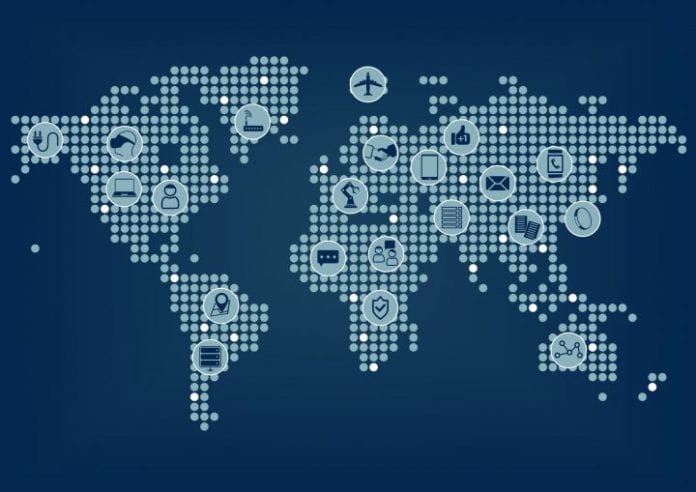Applications of sensors ranging from health care to automotive have introduced innovative approaches of operation, providing safety and convenience.
Sensors have made their way into every aspect of human lives ranging from smartphones to health care. Consumer electronics products are utilizing the devices to enhance the consumer experience and improve efficiency of devices. Furthermore, growing demand for automation have bolstered the market. Sensors can enable lower manufacturing costs and quicker time-to-market, with leading market players investing in research and development activities. Coupled with communication technologies, the units can play a significant part in smart grid, smart home and smart appliances.
The emergence of smartphones have revolutionized the industry. Increasing use in wearable devices and smartphones helps manufacturers add value to consumers, with sensors in health care offering solutions to provide better care and lower medical costs. Wearable health care devices can provide real-time data to medical professionals assisting them in tracking and monitoring health conditions of patients. In its recent report on the sensors market, Allied Market Research states the market is expected to garner $241 billion in revenues by 2022, growing at a compound annual growth rate of 11.3% from 2016 to 2022. Following are recent trends and news that are transforming the sensors industry.
Health sensors to assist in better living
Medical device manufacturers are striving to include sensors in their products in an effort to lower the cost of production and help in providing better care. Pharmaceutical companies are also investing in the development of digital sensors such as pH, dissolved oxygen, conductivity and other probes. In addition, PC-based sensor lifecycle management and measurement tools are also designed to be used with digital sensors. Unlike traditional pH measurement analog sensors, digital pH models convert mV measurement into pH value with the help of calibration. They also store data and other useful information for later use. Furthermore, the same unit can be used in lab, production facilities and hospitals with the help of common platforms for management. Efficient and effective management in health care applications is possible with the help of digital technology.
TZOA, a manufacturing company that produces sensors for measurement of air quality, launched its Enviro-Tracker, which is claimed to be cheaper than units used by government agencies. It is a wearable device designed to monitor pollutants in the air as part of research looking at the impact on brain development of fetuses and children. The company is also planning to launch a device in the Chinese and Indian markets to measure outdoor pollutants.
Health care company Khushi Baby is developing a wearable necklace that includes the medical history of a person. This information can be sent to health care workers in rural areas, who can access the information through a smartphone application and track vaccine needs. Th device uses low-power technology, is waterproof and does not need a battery. The inclusion of sensors in health care devices promises better living for patients and convenience to health care professionals in serving patients.
Sensors for safety
Innovative ways have been found to increase safety by detecting gas leaks in a pipeline. Southern California Gas Company has tested gas detection sensors for detection of gas leaks and improved safety of operation. The solar-powered units are supplemented by battery, with 12 units having been installed at various stations to track methane concentrations and sound an alarm within 15 minutes. The sensors are also designed to detect the presence of natural gas, and have operated for one year with no leaks detected.
“We’re very pleased with the progress of this program over the last year,” said Deanna Haines, director of gas engineering for SoCalGas. “As far as we know, no other natural gas utility has implemented a similar methane detection pilot program. Wider use of methane detectors will enhance public safety.”
Pending approval from the California Public Utilities Commission will provide CoCalGas the green light to deploy methane sensors beginning in 2018, with the company planning to install approximately 2,000 units.
Increasing use of sensors in IoT applications
Sensors play a significant part in “internet of things” applications. Sensors in IoT can collect data and information regarding machines and performance can be tracked.
Telit recently launched an autonomous IoT navigation module, the SL869-3DR, which relies on internal sensors. Information required to perform dead reckoning navigation for various application areas is collected from accelerometers, internal gyros and a barometric pressure sensor. The module obtains information directly from its autonomous DR system or multiconstellation receiver, and is said to offer better sensitivity in harsh environments.
Mahindra Group, the largest manufacturers of tractors in India, has begun an IoT project to place sensors in trucks and tractors to determine potential maintenance needs. Once the unit determines a part is failing, it can inform the service center, potentially saving time and money by replacing the part as soon as possible.
Nitin Chitmalwar is an assistant manager at Allied Market Research and specializes in information and communications technology. He possesses rich and diverse experience in the field of information and communication technology that contributes to his areas of expertise. Chitmalwar brings to the firm years of experience in marketing of content and strategies for ICT, giving him wide industry coverage.
Editor’s Note: In the Analyst Angle section, we’ve collected a group of the industry’s leading analysts to give their outlook on the hot topics in the wireless industry.

